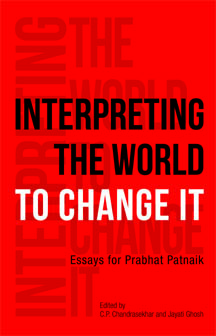It is difficult to review a collection of essays in a book. One may not be fair in giving equal space to each eminent author. All the authors here adhere to a Marxist framework, difference being only in what aspects are highlighted. The book is a festschrift for Prabhat Patnaik, to acknowledge his contribution to the intellectual tradition, his wide-ranging interest and his efforts to find answers to questions he considered relevant. He was more open in his views on the relevance of Marx, as Ashok Mitra says in his praise of Patnaik—that he was more liberal among the liberals, despite being a strong adherent to Marx as the torch bearer of the classical political economy. This book comes at a time when we are witnessing the reversals of our earlier attempts to build a more egalitarian society that got fractured under the so-called reforms of the 1990s when India was opened up to global forces. This happened initially out of a financial crisis of mounting debts and the pressure from international financial agencies to do so—what is known as the Structural Adjustment.
In this context of the triumphal march of global capitalism, it is important to recall Piketty’s Capital In The Twentieth Century (2014). Capitalism, he argued has an inherent tendency to generate an explosive spiral of increasing inequality of wealth and income. This inegalitarian dynamic of capitalism is, he argued, not due to market failures or failure of economic institutions but due to the fundamental characteristic of capitalism. His thesis is built on long historical data relating to Europe and the USA. He extends Marx into the twenty-first century, by extending Marx’s functional distribution of income between capital and labour to personal distribution of income and wealth—especially to the tremendous concentration of wealth at the top centile whereby the 1% of the distribution control 35% of total wealth in the US to near zero for the bottom 50% of the distribution. Capital, he says, includes not only productive capital but personal assets inherited or accumulated by individuals through savings and investment of their labour income, including real estate. This means as the rate of return to all kinds of wealth exceeds the rate of growth of the economy, the stock of capital (or wealth) in the economy will increase and the share of capital in the national economy will go up. As that stock and income from capital increase is relative to total income in the economy, those who own capital and those who inherit some of it, need only reinvest enough of it to grow wealthier.

